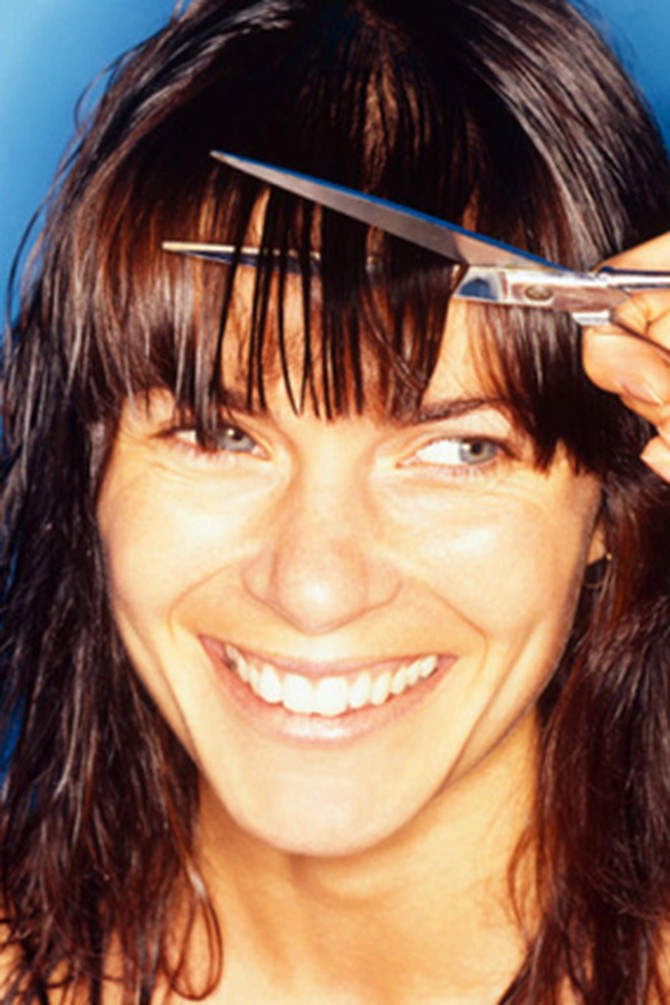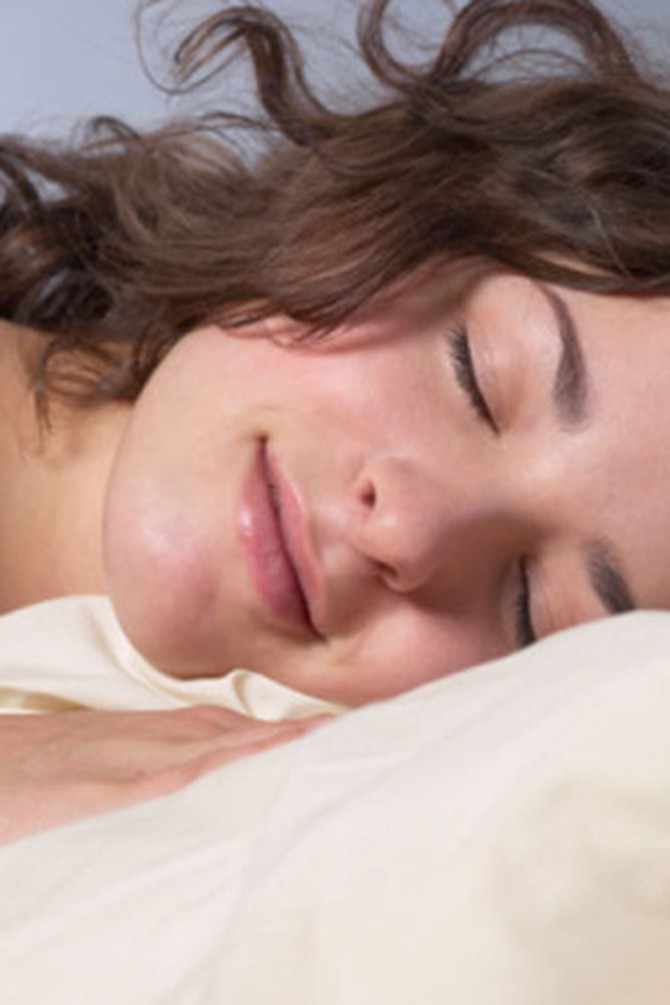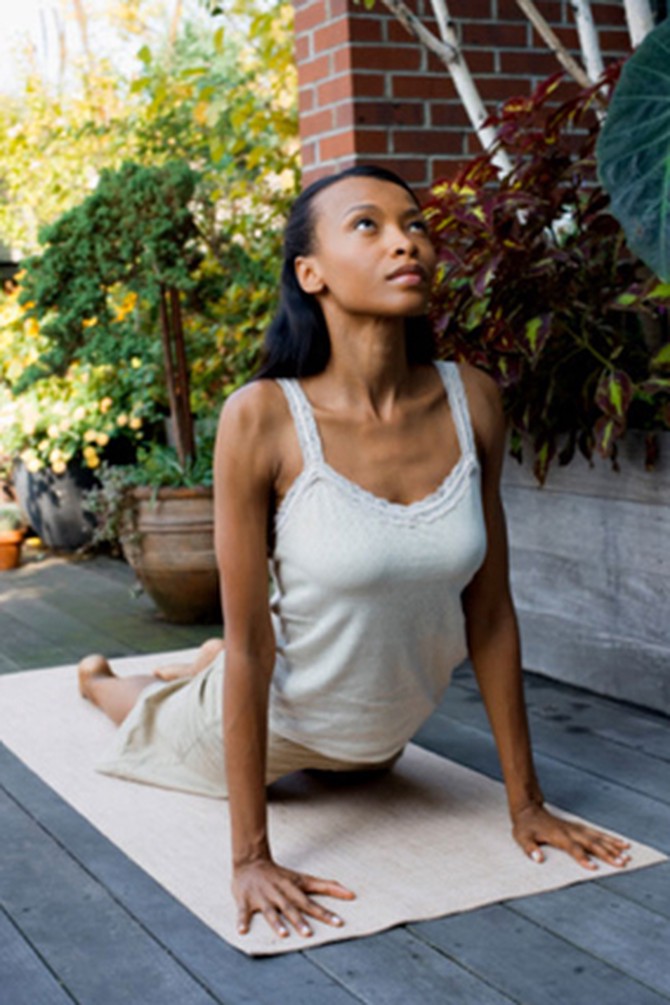The 5 Things You Must Do to Age Beautifully
By Justine Van Leun

Photo: Thinkstock
Protect Your Skin
First stop: the office of dermatologist Dennis Gross, MD, where his luminous assistant, Magda, applies an exfoliating alpha hydroxy acid peel to my face and neck. When the (unlined) doctor enters the room, he explains that the change in pH level in the skin created by just one acid peel can generate collagen, the key to skin that ages well. "Collagen is the skin's structural fiber," he says. "As we get older, it breaks down, creating lines and large pores." What speeds up the degeneration? Sun exposure. "The absolute worst thing you can do is sit in the sun," he says. Sun exposure causes up to 90 percent of wrinkles, dark spots, and sagging. "It can take 10 years to see the effects, so people don't make the connection between a golden tan now and visible damage later," he says. "But by wearing broad-spectrum sunscreen and using topical treatments with as many proven collagen-producing ingredients as possible—including retinol and antioxidants, such as green tea extract and vitamin C—even a person who spent years recklessly sunbathing can make a turnaround."

Photo: Thinkstock
Getting a Good Haircut and Color
Did you know that a good haircut can make your face look firmer? "Side-swept bangs soften the lines on your forehead, and growing your hair a few inches below the chin takes attention away from sagging," says New York City stylist Eva Scrivo. Hormone changes accompanying menopause can cause hair to become thinner and more brittle, so Scrivo recommends emollient shampoos and soft, gentle brushes. You can also bulk up thinning hair with highlighting; the hydrogen peroxide in bleaching agents swells the hair shaft, making it look thicker, says hair and scalp specialist David Kingsley, PhD.
For the fair-skinned, going a little lighter is probably a good idea. "Dark hair can make your features look severe," says Sharon Dorram-Krause, head colorist at the John Frieda Salon in New York City. Are you comfortable going gray? "Weave in silver or buttery highlights or darker lowlights to deepen color and prevent your salt-and-pepper from looking ashy," says Dorram-Krause. Paul Labrecque, owner of the eponymous salon and spa, has only one hard-and-fast rule: "The most important thing as you get older is to wear a hairstyle that's not blown into place but moves."
For the fair-skinned, going a little lighter is probably a good idea. "Dark hair can make your features look severe," says Sharon Dorram-Krause, head colorist at the John Frieda Salon in New York City. Are you comfortable going gray? "Weave in silver or buttery highlights or darker lowlights to deepen color and prevent your salt-and-pepper from looking ashy," says Dorram-Krause. Paul Labrecque, owner of the eponymous salon and spa, has only one hard-and-fast rule: "The most important thing as you get older is to wear a hairstyle that's not blown into place but moves."

Photo: Thinkstock
Turn On Your Brights
I'm smiling in the mirror at my new cut and color when suddenly, oy—my teeth seem to need a little color correction of their own. I dial New York City cosmetic dentist Steven Fox for advice. "Maintenance is more important than aesthetics," he says. "It doesn't matter how white your teeth are if your gums are in bad shape." Twice-yearly visits to the dentist, regular flossing, and brushing with an electric toothbrush should keep your mouth healthy, but expect some inevitable age-related deterioration. "As we get older, there's a natural recession of the gums, making teeth appear longer," says New York City cosmetic dentist Jonathan Levine (hence the expression "long in the tooth"). If recession really bothers you, Levine suggests a combination of enameloplasty (filing off bits of enamel to shorten the teeth) and ceramic veneers (thin ceramic shells bonded to your teeth to change their shape); veneers can eliminate the discomfort of exposed roots, another side effect of receding gums, as well.
Over time teeth may also yellow from smoking, plaque accumulation, and coffee, tea, and red wine stains. In an ultraviolet whitening procedure, a dentist applies a peroxide gel to your teeth and then activates it with a UV ray. Because high concentrations of peroxide suck calcium from your teeth, making them more porous and thus prone to stains, your dentist can apply a remineralizing gloss, which adds back calcium and prevents discoloration. If you don't want to shell out up to $1,500 on an office treatment, try over-the-counter whiteners. But stay away from store-bought trays and gels, which can burn your gums by saturating them with peroxide (a custom tray is molded to your mouth so bleach hits only your teeth). Paint-ons, applied to the teeth with a wand or a brush, and strips, which restrict the chemicals to a small piece of plastic, are safe. But don't get obsessed—overbleached teeth assume a gray tint.
Over time teeth may also yellow from smoking, plaque accumulation, and coffee, tea, and red wine stains. In an ultraviolet whitening procedure, a dentist applies a peroxide gel to your teeth and then activates it with a UV ray. Because high concentrations of peroxide suck calcium from your teeth, making them more porous and thus prone to stains, your dentist can apply a remineralizing gloss, which adds back calcium and prevents discoloration. If you don't want to shell out up to $1,500 on an office treatment, try over-the-counter whiteners. But stay away from store-bought trays and gels, which can burn your gums by saturating them with peroxide (a custom tray is molded to your mouth so bleach hits only your teeth). Paint-ons, applied to the teeth with a wand or a brush, and strips, which restrict the chemicals to a small piece of plastic, are safe. But don't get obsessed—overbleached teeth assume a gray tint.

Photo: Thinkstock
Sleep Deeply
Another important aspect to aging beautifully: lolling in bed. "Lack of sleep has been shown to raise levels of cortisol and glucose, causing health problems such as hypertension and type II diabetes, which make you age much more quickly," says James Maas, PhD, professor of psychology at Cornell University and author of Power Sleep, who recommends 7.5 to 8.5 hours. "And though we used to think that lying in bed made us slothful, in fact sleep is the best diet there is." Research has shown that compared with people who sleep eight hours a night, those getting five hours have 15 percent lower levels of the appetite-suppressing hormone leptin and 15 percent higher levels of hunger-increasing ghrelin. "You wake up starving for complex carbohydrates," says Maas. But sleep deprivation does more than wreak havoc on your body—its effects are written all over your face. .
"Skin cells turn over more quickly when you sleep," says Jeanine Downie, MD, director of Image Dermatology in Montclair, New Jersey, and coauthor of Beautiful Skin of Color. "If you don't get enough sleep, your skin won't renew itself and will start looking dull—especially as you age, when cell turnover is slowing down." Skin temperature also rises when you sleep, allowing topical treatments to penetrate the skin more effectively than they do during the day. And there's the common badge of fatigue: dark circles. While puffiness is determined by genetics, shadows are often aggravated by lack of sleep, which can cause some blood to seep from the tiny capillaries beneath the thin skin under your eyes.
"Skin cells turn over more quickly when you sleep," says Jeanine Downie, MD, director of Image Dermatology in Montclair, New Jersey, and coauthor of Beautiful Skin of Color. "If you don't get enough sleep, your skin won't renew itself and will start looking dull—especially as you age, when cell turnover is slowing down." Skin temperature also rises when you sleep, allowing topical treatments to penetrate the skin more effectively than they do during the day. And there's the common badge of fatigue: dark circles. While puffiness is determined by genetics, shadows are often aggravated by lack of sleep, which can cause some blood to seep from the tiny capillaries beneath the thin skin under your eyes.

Photo: Thinkstock
Straighten Up
Okay, I'm setting my alarm later, whitening my teeth, avoiding the hairspray, and slathering on sunscreen. But all the gorgeous older women I know carry themselves handsomely; what's that about? "You need to maintain bone strength for good posture," says Lesley Fein, MD, director of the Women's Health Program at the Princeton Longevity Center in New Jersey. You lose .5 to 1 percent of your bone density every year after you turn 40, and that rate can increase to 3 to 7 percent after menopause. Calcium and vitamin D help mitigate the loss, though. In one study, postmenopausal women who took 1,000 milligrams of calcium daily lowered their rate of bone loss by almost half.
You should also develop strong back and shoulder muscles through weight training, says Chris Volgraf, an exercise physiologist at the Longevity Center; research has shown that both strength training and resistance exercise can slow and even reverse bone loss in healthy postmenopausal women. As I wash down a vitamin D supplement with a glass of milk and reach for a five-pound barbell, he tells me that good carriage also comes from practice. So I call Steffany George, a dancer and movement teacher at New York City's famed Stella Adler Studio-of-Acting, who suggests that I root my feet to the ground, breathe deeply into the width of my ribs, and lift the crown of my head toward the sky. "People interpret hunched posture as a sign of gravity's triumph, and straight posture as a sign of energy, confidence, and engagement," she says, adding that she often envisions her spine as a strand of pearls that mustn't hit each other. She tells me about Elizabeth Parrish, an older, master acting teacher who moves "like a silk curtain in the wind." I ask Parrish for her secret. "Some women have a fit when they turn 40 or 50, but instead of gluing yourself to a number, glue yourself to life," she says. She seems to have a very positive view of aging, I say. "And you better have it," she says. "Why," I say, "because it's going to happen to me?"
"If you're lucky," she says.
You should also develop strong back and shoulder muscles through weight training, says Chris Volgraf, an exercise physiologist at the Longevity Center; research has shown that both strength training and resistance exercise can slow and even reverse bone loss in healthy postmenopausal women. As I wash down a vitamin D supplement with a glass of milk and reach for a five-pound barbell, he tells me that good carriage also comes from practice. So I call Steffany George, a dancer and movement teacher at New York City's famed Stella Adler Studio-of-Acting, who suggests that I root my feet to the ground, breathe deeply into the width of my ribs, and lift the crown of my head toward the sky. "People interpret hunched posture as a sign of gravity's triumph, and straight posture as a sign of energy, confidence, and engagement," she says, adding that she often envisions her spine as a strand of pearls that mustn't hit each other. She tells me about Elizabeth Parrish, an older, master acting teacher who moves "like a silk curtain in the wind." I ask Parrish for her secret. "Some women have a fit when they turn 40 or 50, but instead of gluing yourself to a number, glue yourself to life," she says. She seems to have a very positive view of aging, I say. "And you better have it," she says. "Why," I say, "because it's going to happen to me?"
"If you're lucky," she says.
From the October 2005 issue of O, The Oprah Magazine

